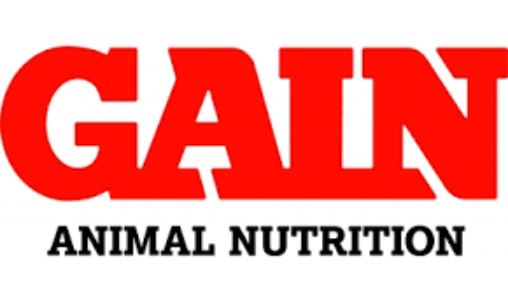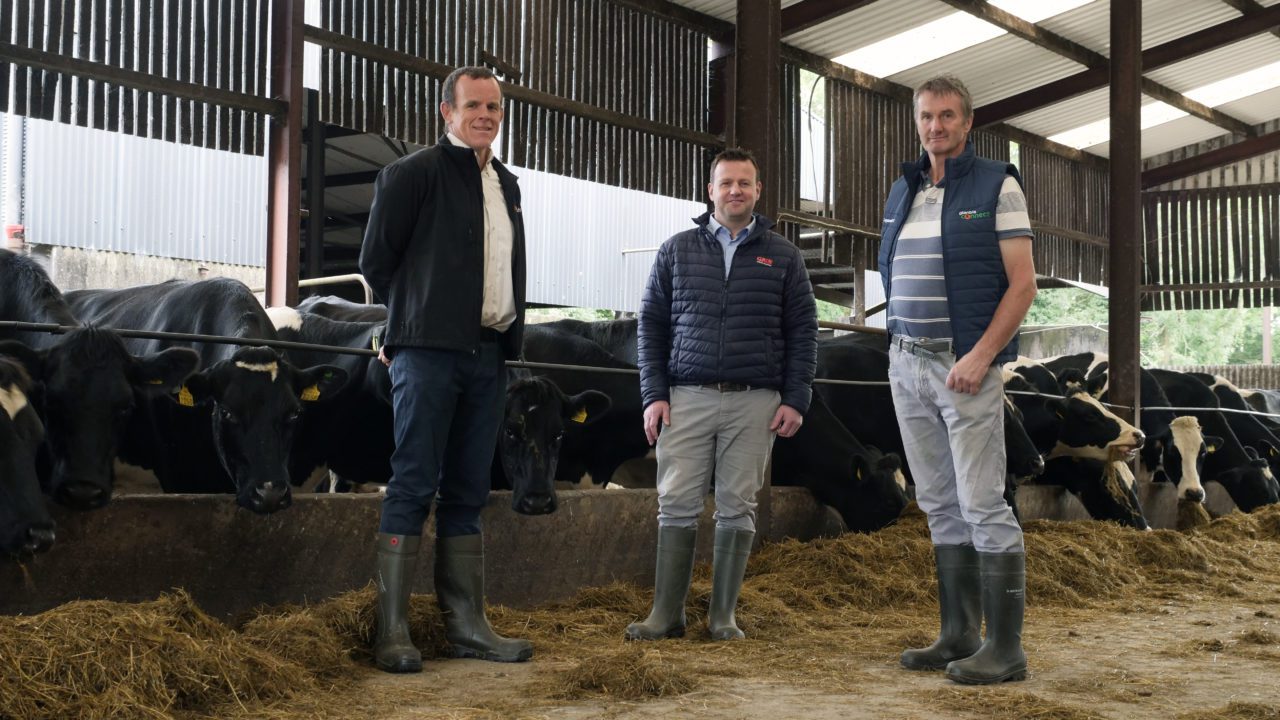Roger Boyd runs a 160-cow Holstein Friesian dairy herd, on a 100ac milking platform in Tinahealy, Co. Wicklow.
He milks approximately 160 dairy cows through a predominantly grass-based system, in a spring and autumn-calving split (50 in the autumn and 110 in the spring.
“Our winter feed is based on grass silage now, having used maize historically on the farm. Our herd produces 6,500L/cow with 4% fat and 3.35% protein,” Roger said.
A fourth generation dairy farmer, Roger has been farming the land all his life.
“I’ve been farming for 44 years, a fourth generation dairy farmer,” he said.
“I have two lads working with me; Ray and Dan. My son works off-farm but has an involvement on the farm.”
Roger admits that calving has been relatively straight-forward and hassle free for the past number of calving seasons. “Thankfully” he said, “calving has went very well”.
“I’d put that down to the cows being in the right physical condition.”
Mineral supplementation is key
Roger places a high level of importance on giving his cows the right mineral supplementation during the dry cow period.
“If you want your herd to perform, you have to give them all that they need from a nutritional stand-point,” he said.
“The right mineral supplementation sets the cow up for the whole year.
“It really is an area that you cannot neglect or overlook. If you don’t get it right during the dry cow period, you face the real possibility of having higher levels of calving difficulties and cleaning retention.”
When it comes to grass silage quality and the historic mineral profile of his farm, Roger is fully aware of what his farm has and is lacking.
“As the farm is in south Wicklow, from a fertility and fertiliser point of view, our soils are sufficient in potash and low on phosphorus, but that’s just normal in the whole area.
“We’re a full derogation farm so we’re stuck at a full cow to the acre, so we’re pushing our grass, and have been, for the last few years. We are under no illusions that we do need mineral top-ups from time to time.”
The late lactation period
In terms of managing cows in late lactation and during the dry cow period, Roger has a robust plan in place to ensure that his cows are performing to their optimum level.
“In late lactation, they’re still on a grass diet and getting just two kilos of ration. We would then start feeding some silage,” he explained.
“Once we dry off the spring-calving cows, they are mostly on a silage-only diet for the winter and some dry cow minerals before calving.
“If some of them are a bit thin, they would get a small bit of ration in addition. For the fatter cows, they would be getting a straw and silage diet.
“We like to dry off cows near enough to where we’re calving them. So we’d like to dry off cows at a body condition score of 2.75 to 3. We keep our autumn-calving cows on grass, except for the last two weeks, we put them on a more fibrous diet of baled silage and straw.
“At the same time, the spring-calving cows are going to be on silage. We try to get cows out to grass in February or as soon as we can, but we’re still feeding some silage at nighttime.”
Pre-calving supplementation
Roger has been giving his cows GAIN Pre Calver Gold for many years now and believes this has been the reason why calving has went so well on his farm.
“We’ve been feeding GAIN Pre Calver Gold for a lot of years now. I have seen a noticeable difference when it comes to the condition of the cows at calving,” he said.
“Cows aren’t retaining cleanings and there are very few cases of milk fever now. Calvings are much more straight-forward and trouble free. GAIN Pre Calver Gold works for me and my system and I won’t be changing that.”
GAIN Pre Calver Gold is a highly palatable premium quality mineral supplement that is specifically formulated for pre-calver dairy cows in the 6-8 week period leading up to calving.
It supports the immunity development of the unborn calf, reduces the chances of retained cleanings and promotes high quality colostrum, calf thrive and helps to prevent milk fever after calving.
From Alltech, GAIN Pre Calver Gold has Bioplex protected organic minerals and Sel-plex protected Selenium included.
Bioplex protected minerals improve mineral availability, body storage and usage and have a benefit of €50/cow/year.
Bioplex protected minerals decrease lameness by 24% alongside helping to improve locomotive score and helping to reduce somatic cell count by 22%. Sel-plex protected selenium helps to improve cell counts (SCC), mastitis and fertility.
Technical support
Gary Johnson is Roger’s GAIN business manager. Roger recognises the strong working relationship that they have developed and feels confident in calling on Gary’s advice whenever it is need.
“Gary knows exactly what it is we are trying to achieve on the farm and only recommends products that will deliver positive results for us,” he said.
“I can give him a call anytime which is something you don’t get with a lot of businesses.”
GAIN Pre Calver Gold – and any other products Roger would have discussed with Gary – are described in the Superchoice brochure.
Browse the Superchoice range and get all the information you need to help you make the best choice for your cows, but also for the future health and performance of the unborn future replacements they are carrying.

To read the brochure in full, click here.
Glanbia Co-op Trading Bonus Scheme

The Glanbia Co-op Trading Bonus Scheme encourages, recognises and rewards active Members of the Co-op for trading with the business they majority own, Glanbia Ireland.
Member benefits:
- An opportunity to get €10 back on manufactured feed, purchased by dry shareholder farmer Co-op Members;
- A potential 4% return to dairy farmer Co-op Members who trade at 5c/L (the 4% return is equivalent to a €12/t discount on a €300/t of product);
- A potential 5% return to dairy farmer Co-op Members who trade at 8c/L (the 5% return is equivalent to a €15/t discount on a €300/t of product).
For more information, contact your GAIN Business Manager, Glanbia Branch or visit glanbiaconnect.com.

